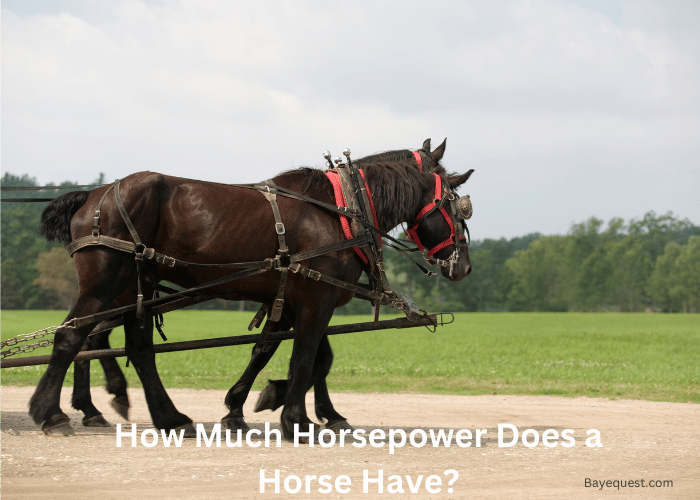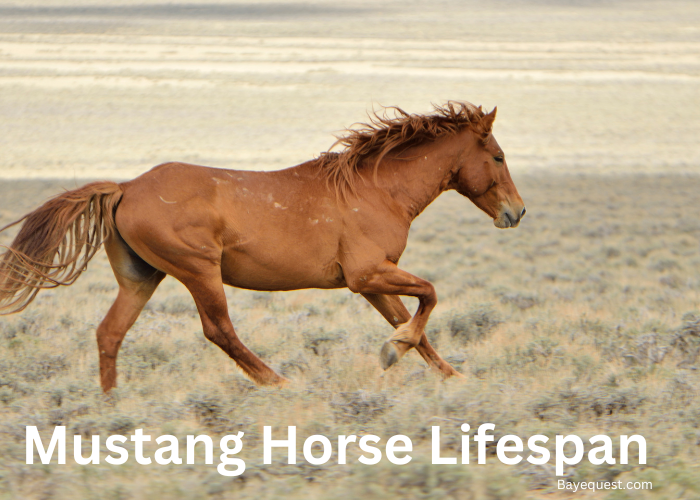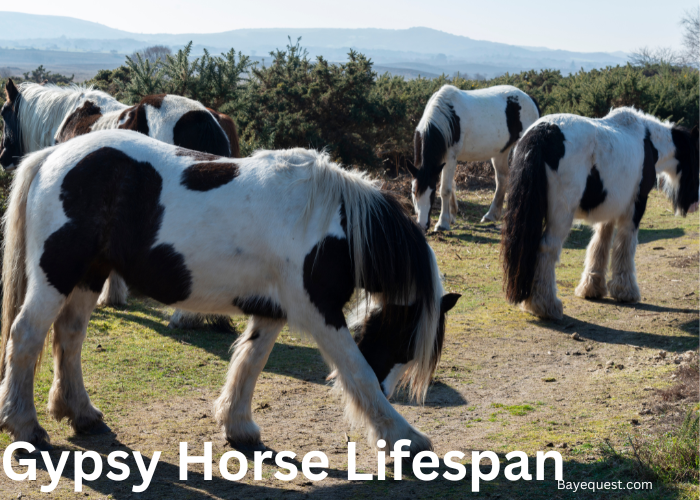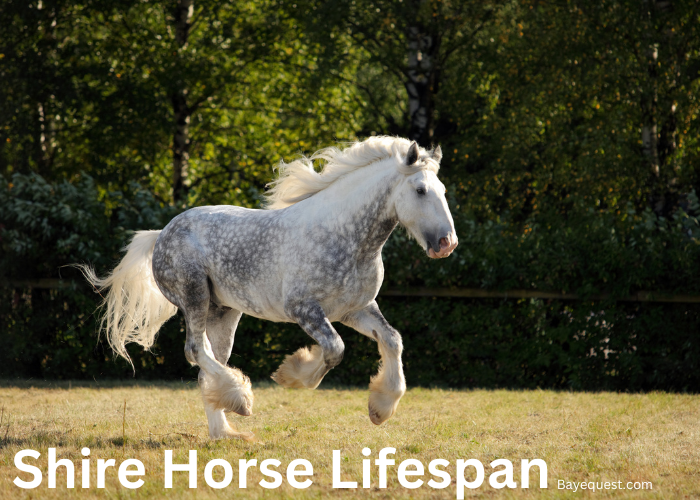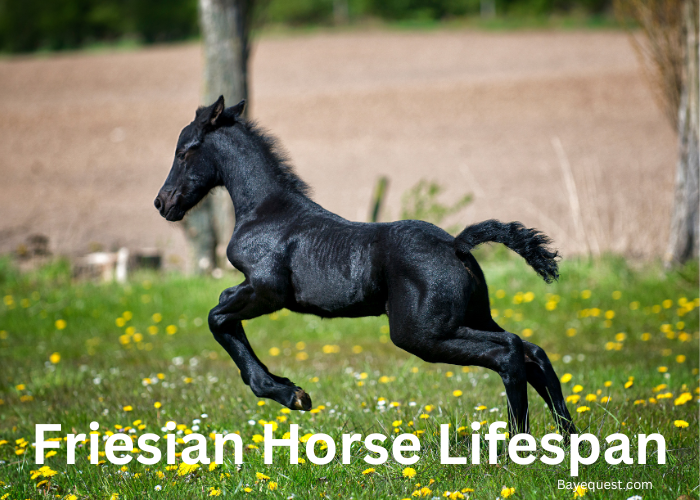How much horsepower does a horse have? It sounds like an easy question, right?
Most people would say one. But that’s not quite true.
The term “horsepower” was invented in the 18th century by an engineer selling steam engines.
And here’s the surprise—a real horse can produce more power than you might think.
Some horses are stronger than others. So, let’s break down the facts and see how horsepower really works.
How Much Horsepower Does a Horse Have? Key Takeaway
A horse has between 1 to 2 horsepower for sustained work. However, in short bursts, a horse can produce up to 15 horsepower. The actual power depends on the horse’s breed, size, and fitness level. So, while “horsepower” is a standard measure, a horse’s power can vary widely.
What is Horsepower?
Horsepower is a way to measure power. Simple as that. It all started with a man named James Watt.
He needed a way to show how strong his steam engines were compared to real horses. So, he watched horses working in mills, lifting heavy loads.
From that, he figured out how much work a horse could do in a minute. And he called that “one horsepower.”
Today, we use it to measure the power of engines, from cars to lawnmowers. But it all began with those hard-working horses.
How Much Horsepower Does a Horse Have?
A horse doesn’t just have one horsepower—it’s more complicated than that. On average, a horse can produce about 15 horsepower in short bursts.
Over a longer period, it’s closer to one or two horsepower. It depends on the horse, the work, and how long it’s going at it.
A racehorse, sprinting down the track, can reach higher horsepower than a draft horse pulling a heavy load slowly.
So, when we talk about horsepower, it’s not a fixed number. Horses, like engines, come with their power levels.
Read also: How Much Weight Does a Horse Carry?
How is Horsepower Measured?
Horsepower is all about measuring how much work gets done in a set amount of time. The idea came from James Watt, who watched horses turning mill wheels.
He figured out that a horse could turn a mill wheel with a load of 550 pounds, 1 foot in one second. That’s 550 foot-pounds per second.
And that became the base for “one horsepower.” Today, we use different kinds of horsepower—mechanical, metric, brake horsepower—but they all measure the same thing: power.
Types of Horsepower
There’s more than one kind of horsepower, and each type measures power a bit differently.
First, we have mechanical horsepower, the classic one, used in the U.S. It’s about 745.7 watts.
Then there’s metric horsepower, common in Europe, slightly different at 735.5 watts.
Next up, brake horsepower (BHP), which measures an engine’s power without any loss from parts like the gearbox or alternator.
There’s also shaft horsepower, used for ships and planes, measuring power delivered to the propeller or rotor.
Different names, slightly different numbers, but they all tell us how much work gets done and how fast.
The Relationship Between Horsepower and Actual Horses
Horsepower and actual horses—sounds like they’d be the same, but they’re not. When James Watt came up with “horsepower,” he watched horses turning wheels at mills.
He figured one horse could do a certain amount of work in a minute, and he called that “one horsepower.” But here’s the twist: real horses don’t work at a steady “one horsepower” all the time.
They can produce more power in short bursts—up to 15 horsepower when sprinting.
So, horsepower is more a rough guide than a real measure of what a horse can do.
Does One Horsepower Equal One Horse?
Nope, not quite. One horsepower doesn’t mean the power of one horse.
It’s more like an average measure. When James Watt coined the term, he wasn’t thinking about a horse’s peak power.
He based it on what a typical draft horse could do over a long period. But a horse’s power isn’t that simple.
A sprinting horse can hit up to 15 horsepower in short bursts, while a working horse pulling a load might stick closer to that “one horsepower.”
So, it’s a bit of a myth. One horsepower doesn’t always mean just one horse.
Read also: How Much Weight Can a Horse Pull?
How Can Horsepower Have Different Definitions?
Horsepower has different definitions because power isn’t always the same thing, depending on what you’re measuring.
When James Watt first defined horsepower, it was about how much work a horse could do in a minute.
But, as machines evolved, we needed new ways to measure power.
That’s why we have mechanical horsepower for engines, metric horsepower in Europe, and brake horsepower (BHP) for cars, which doesn’t count power lost in the engine’s parts.
Then there’s shaft horsepower for boats and planes. Different tasks, different needs, different definitions—but all about getting work done.
The Modern Use of Horsepower
Today, horsepower is all about engines and machines. We use it to measure the power of cars, trucks, boats, and even lawnmowers.
When you hear a car has 300 horsepower, it means the engine can do a lot of work quickly—like pushing you back in your seat when you hit the gas. In factories, horsepower tells us how powerful a machine is.
Even planes and ships use horsepower to gauge how strong their engines are.
So, while it started with horses, now horsepower is all about speed, strength, and how much power you’ve got under the hood.
Comparison of Different Horses and Tasks
Not all horses have the same power. Draft horses, built for strength, can pull heavy loads and work for hours, producing around 1 to 2 horsepower steadily.
Racehorses, on the other hand, are bred for speed. They can reach up to 15 horsepower in short sprints.
Ponies, smaller but mighty, may produce less power but can still perform tough tasks like pulling carts.
Each horse’s job—whether sprinting, plowing, or carrying a rider—demands different levels of power.
So, when it comes to horsepower, it’s all about the task and the horse built for it.
Read also: Best Racing Horses of all Time.
Animal Horsepower Comparison
| Animal | Average mass (kg) | Force exerted (N) | Speed (m/s) | Power (HP) |
|---|---|---|---|---|
| Ox | 600 – 1,000 | 1,500 – 2,500 | 1.0 – 1.5 | 0.5 – 1.0 |
| Bull | 900 – 1,100 | 1,800 – 2,700 | 1.0 – 1.5 | 0.8 – 1.2 |
| Donkey | 150 – 200 | 400 – 600 | 1.0 – 1.5 | 0.2 – 0.3 |
| Mule | 350 – 500 | 1,000 – 1,500 | 1.0 – 1.5 | 0.5 – 0.8 |
| Cow | 500 – 700 | 1,200 – 1,800 | 0.8 – 1.2 | 0.4 – 0.7 |
| Water Buffalo | 700 – 1,200 | 1,500 – 2,500 | 1.0 – 1.5 | 0.6 – 1.0 |
| Camel | 400 – 600 | 1,000 – 1,500 | 1.2 – 1.8 | 0.6 – 0.9 |
| Human Being | 70 – 90 | 200 – 300 | 1.5 – 2.0 | 0.1 – 0.2 |
| Horse | 400 – 700 | 1,500 – 2,500 | 1.5 – 2.0 | 1.0 – 1.5 |
Is Horse Really One Horsepower? Conclusion
So, there you have it. Horsepower isn’t as simple as one horse equals one horsepower. It’s more like a clever marketing trick that stuck around.
A horse might pack more punch than you’d think, and engines have taken that idea and run with it. From cars to planes, horsepower is everywhere.
It started in a mill with a horse, and now it’s in every engine roaring down the road.
Next time someone talks horsepower, you’ll know—it’s not just about the horses. It’s about power, pure and simple.




